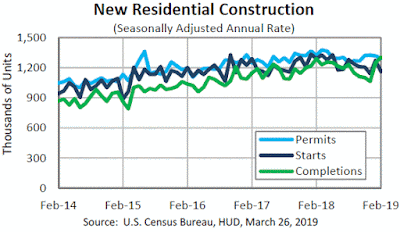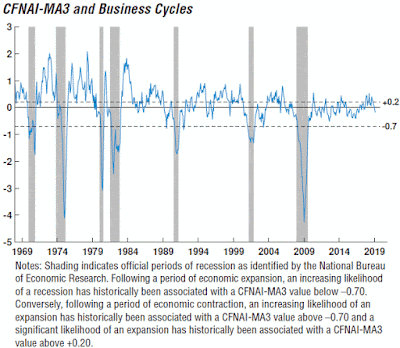Consumer Sentiment: Final Result for March 2019
Predicted: 97.8
Actual: 98.4
- Change from Previous Month: +4.904% (+4.6 points)
- Change from 12 Months Previous: -2.959% (-3.0 points)
=========
- Final ICS Reading from February 2019: 93.8
- Final ICS Reading from March 2018: 101.4
=========
From today's report:
"...Consumer confidence rebounded in March to 98.4 from last month's 93.8, slightly above the average of 97.2 recorded in the past 26 months. The March gain in the Sentiment Index was entirely due to households with incomes in the bottom two-thirds of the income distribution, posting a gain of +7.1 Index-points, while households with incomes in the top third fell by 1.1 Index-points. Middle and lower income households more frequently reported income gains than last month, although income gains were still widespread among upper income households. Indeed, the last time a larger proportion of households reported income gains was in 1966. Rising incomes were accompanied by lower expected year-ahead inflation rates, resulting in more favorable real income expectations. Moreover, all income groups voiced more favorable growth prospects for the overall economy.
While no further decline in interest rate expectations was recorded in March, the data suggest that consumers anticipated additional increases in 2019. Finally, it should be noted that too few interviews were conducted following the summary release of the Mueller report to have any impact on the March data; if there is any, it may affect the April data. Overall, the data do not indicate an emerging recession but point toward slightly lower unit sales of vehicles and homes during the year ahead..."
=========
The ICS is derived from the following five survey questions:
- "We are interested in how people are getting along financially these days. Would you say that you (and your family living there) are better off or worse off financially than you were a year ago?"
- "Now looking ahead, do you think that a year from now you (and your family living there) will be better off financially, or worse off, or just about the same as now?"
- "Now turning to business conditions in the country as a whole, do you think that during the next twelve months we'll have good times financially, or bad times, or what?"
- "Looking ahead, which would you say is more likely: that in the country as a whole we'll have continuous good times during the next five years or so, or that we will have periods of widespread unemployment or depression, or what?"
- "About the big things people buy for their homes, such as furniture, a refrigerator, stove, television, and things like that. Generally speaking, do you think now is a good or bad time for people to buy major household items?"
- Click here for more on how the ICS is calculated.
=========
The ICS uses a 1966 baseline, i.e. for 1966, the ICS = 100. So any number that is below the 1966 baseline of 100 means that the folks who were polled recently aren't as optimistic about the U.S. economy as the sample that was polled back in 1966.
The ICS is similar to the Consumer Confidence Index in that they both measure consumer attitudes and offer valuable insight into consumer spending.
=========
The "predicted" figure is what economists were expecting, while the "actual" is the true or real figure.
=========
=========
Labels: consumer_sentiment, consumers, soft_data
|
--> www.FedPrimeRate.com Privacy Policy <--
CLICK HERE to JUMP to the TOP of THIS PAGE > SITEMAP < |






